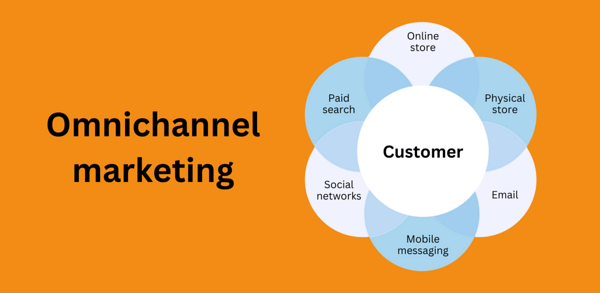


Customers today expect brands to know them—whether they’re shopping in New York, browsing in London, or ordering online in Mumbai. That’s where an omnichannel marketing strategy comes in.
In fact, companies with strong omnichannel strategies retain 89% of their customers, compared to just 33% for companies with weak strategies (Aberdeen Group). And with the rise of AI-driven personalization and privacy-first data practices, omnichannel is no longer optional—it’s your ticket to sustained growth in 2025 and beyond.
In this blog, I’ll break down the omnichannel marketing strategy from my lens as a digital growth consultant, enriched with tools, trends, and real-world stats to help you turn awareness into loyalty—across every touchpoint.
Start by mapping the path your customer takes before making a purchase. For example:
Use tools like Google Analytics 4, Hotjar, or HubSpot to track these steps and improve each one.
Tip: Platforms like Digital Halt help map and optimize user journeys across multiple channels.
You can’t offer a great experience without understanding your audience. So bring all your customer data together:
In the UK, brands like ASOS are excellent at using centralized data to offer personalised suggestions in emails and on their app.
Just make sure you’re compliant with privacy laws like GDPR (Europe), CCPA (USA), or DPDP (India).
Group your customers based on behavior, not just location.
Tools like MoEngage and Klaviyo can help automate personalized campaigns. According to McKinsey, 71% of consumers expect personalized interactions.
Try creating offers based on browsing history. A user who views shoes twice but doesn’t buy? Show them a 10% off banner the next time they visit.
Whether someone finds you on Google, LinkedIn, or walks into your store, the message should feel the same.
For example:
You can use marketing automation tools like Mailchimp, WebEngage, or Sendinblue for this.
Consistency builds trust. Inconsistent offers frustrate users and hurt conversions.
AI makes it easier to scale your marketing. Here’s how it’s being used worldwide:
You can apply this too:
AI tools like Jasper, Copy.ai, and ChatGPT are helpful for creating personalized content quickly.
Nothing works if you can’t track it. So set your KPIs:
Do A/B testing on:
Use platforms like Digital Halt to track analytics and campaign performance from one dashboard.
Also, don’t forget to gather feedback. Tools like Trustpilot, Google Reviews, or SurveyMonkey can give you honest insights from users across markets.
If you want to stay ahead, here’s what you should focus on:
Omnichannel is no longer a luxury—it’s a necessity. Whether you’re running a small fashion label in Jaipur or a B2B brand in Chicago, the way to win is by being present, personalized, and consistent.
function add_custom_json_ld_schema() { if (is_single(1234)) { ?>Want help building your brand’s omnichannel plan? Check out rahulshekhawat.com — where I share strategies that actually work.